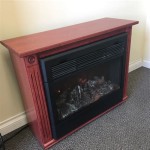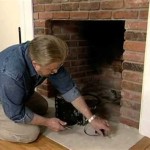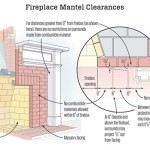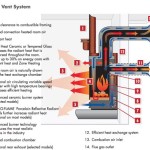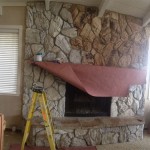```html
Non-Vented Fireplace Logs: A Comprehensive Guide
Non-vented, or vent-free, fireplace logs represent a popular alternative to traditional wood-burning fireplaces and vented gas log sets. They offer the aesthetic appeal of a fire without the need for a chimney or venting system. This makes them a viable option for homes where installing a traditional fireplace is impractical or impossible. However, understanding the functionality, safety considerations, and maintenance requirements of non-vented fireplace logs is crucial before making a purchase.
These log sets operate by burning propane or natural gas in a controlled manner, producing heat and a realistic-looking flame. The combustion process is designed to be highly efficient, minimizing the production of harmful emissions. The efficiency allows the majority of the heat generated to be radiated into the room, rather than escaping through a chimney. This characteristic is a primary advantage of non-vented systems, enabling them to provide supplemental heating to a living space.
Key Point 1: Operational Mechanics and Fuel Considerations
The operational principle of non-vented gas logs centers around complete combustion. These logs are designed to burn fuel, either propane or natural gas, as cleanly as possible. This complete combustion is achieved through specialized burner technology and log design that promotes thorough mixing of fuel and air. A pilot light ignites the gas-air mixture, initiating the fire. Thermostats or remote controls often regulate the flame height and heat output, allowing for precise temperature control within the room.
The choice between propane and natural gas depends on the availability of gas lines and personal preference. Natural gas is typically a more affordable option if a natural gas line is already present in the home. Propane, on the other hand, requires a separate tank and may involve higher fuel costs. However, propane offers greater flexibility in terms of placement as it is independent of existing gas infrastructure.
The logs themselves are usually made of ceramic or refractory cement, meticulously crafted to resemble real wood. These materials are heat-resistant and designed to withstand the high temperatures of the burning gas. The arrangement of the logs is also carefully planned to optimize the flame pattern and create a visually appealing fire display.
Oxygen Depletion Sensors (ODS) are crucial safety features embedded within these systems. The ODS monitors the oxygen levels in the room. If the oxygen level drops below a certain threshold, indicating incomplete combustion and potential carbon monoxide buildup, the ODS will automatically shut off the gas supply, preventing a dangerous situation.
Key Point 2: Safety Regulations and Installation Requirements
The safety of non-vented fireplace logs is paramount and is governed by stringent regulations and installation requirements. These regulations are in place to minimize the risk of carbon monoxide poisoning and other potential hazards associated with indoor gas appliances. It is essential to comply with all applicable codes and guidelines during installation and operation.
Local building codes and fire safety regulations often dictate specific requirements for the installation of vent-free gas logs. These requirements may include minimum room size, ventilation requirements (even though the systems are "vent-free"), and clearances from combustible materials. Consulting with a qualified HVAC professional or building inspector before installation is highly recommended to ensure compliance and safety.
Professional installation is generally recommended for non-vented gas logs. A qualified technician can ensure that the gas connections are properly made, the log set is correctly positioned, and the safety features, such as the ODS, are functioning correctly. Improper installation can lead to gas leaks, incomplete combustion, and other safety hazards.
Carbon monoxide detectors are an absolute necessity in any home with a non-vented gas fireplace. These detectors provide an early warning of carbon monoxide buildup, allowing occupants to evacuate the premises and seek medical attention. Carbon monoxide detectors should be installed on every level of the home, especially near sleeping areas.
Regular maintenance is also critical for ensuring the safe operation of non-vented gas logs. This maintenance includes cleaning the burner assembly, inspecting the gas connections for leaks, and verifying the proper functioning of the ODS. Following the manufacturer's recommendations for maintenance and service is crucial for preventing problems and ensuring long-term safety.
Key Point 3: Advantages and Disadvantages of Non-Vented Systems
Non-vented fireplace logs offer several advantages that make them an attractive option for homeowners. Their primary benefit is the ability to install a fireplace without the need for a traditional chimney or venting system. This makes them ideal for homes without existing chimneys or for rooms where adding a chimney is impractical or expensive.
They are generally more energy-efficient than vented gas logs or wood-burning fireplaces. Because they don't require a chimney, the majority of the heat generated by the fire is radiated into the room, providing supplemental heating. This can help to reduce heating costs, especially in milder climates.
Non-vented gas logs are relatively easy to operate. They typically start with the push of a button or the flip of a switch, and the flame height and heat output can be easily adjusted with a thermostat or remote control. This convenience makes them a popular choice for homeowners who want the ambiance of a fire without the hassle of wood-burning.
However, non-vented systems also have certain disadvantages that need to be considered. One potential concern is the possibility of indoor air quality issues. Although these systems are designed for complete combustion, incomplete combustion can still occur, leading to the release of carbon monoxide and other pollutants. Regular maintenance and the use of carbon monoxide detectors are essential for mitigating this risk.
Another consideration is the potential for moisture buildup in the room. The combustion process produces water vapor, which can increase the humidity level in the air. In poorly ventilated rooms, this can lead to condensation, mold growth, and other moisture-related problems. Ensuring adequate ventilation is important for managing humidity levels.
Finally, some individuals may be sensitive to the odors produced by burning gas. Although these odors are typically faint, they can be bothersome to some people. Choosing a log set with a high-quality burner and ensuring proper ventilation can help to minimize odors.
In summary, while non-vented fireplace logs offer a convenient and efficient way to enjoy the warmth and ambiance of a fire, it is crucial to understand their operational mechanics, safety requirements, and potential drawbacks. Proper installation, regular maintenance, and the use of carbon monoxide detectors are essential for ensuring safe and enjoyable use.
```:max_bytes(150000):strip_icc()/ventless-gas-fireplaces-4160746-hero-f9d4bdcd9bd446eb84406de306f790ba.jpg?strip=all)
How To Pick Out A Ventless Gas Fireplace

Pleasant Hearth Wildwood 24 In Vent Free Dual Fuel Gas Fireplace Logs Vfl2 Ww24dt The Home Depot

Napoleon Gvfl30 Ventless Gas Log Set 30 Inch

Vented Vs Ventless Gas Logs What S The Difference

Vent Free Gas Log Sets A List Of Do S And Don Ts

Ventless Gas Log Set Guide Fireplaces Direct Learning Center

What Is A Ventless Gas Fireplace Experts In Gaithersbutg Md

Empire Ponderosa 30 Vent Free Gas Log Electronic Pilot Fine S

Considering A Ventless Gas Fireplace Here S What You Need To Know Bob Vila

Duluth Forge 22 In Winter Oak Vent Free Dual Fuel Gas Fireplace Log Set 32 000 Btu Thermostat Control 170803 The Home Depot
Related Posts

